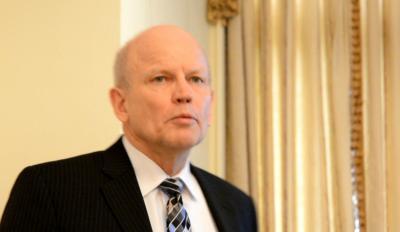The world could be less than 40 years away from a food shortage that will have serious implications for people and governments, according to a senior science advisor at the U.S. Agency for International Development. It's not Paul Ehrlich/John Holdren Doomsday Prophet levels of gloom, but it's a sign we need to keep science advancing.
USAID, created under executive order by President John. F. Kennedy in 1961, is the lead U.S. Government agency that works to end extreme global poverty and promote democracy.
"For the first time in human history, food production will be limited on a global scale by the availability of land, water and energy," said Dr. Fred Davies, Texas A&M AgriLife Regents Professor of Horticultural Sciences
and senior science advisor for the agency's bureau of food security. "Food issues could become as politically destabilizing by 2050 as energy issues are today," he said at the North American Agricultural Journalists meeting in Washington, D.C.
He said the world population will increase 30 percent to 9 billion people by mid-century. That would call for a 70 percent increase in food to meet demand.
"But resource limitations will constrain global food systems," Davies added. "The increases currently projected for crop production from biotechnology, genetics, agronomics and horticulture will not be sufficient to meet food demand."
More funding will fix it, he says.

Dr. Fred Davies, US Agency for International Development senior
science advisor for the agency's bureau of food security and a
Texas A&M AgriLife Regents Professor of Horticultural Sciences.
Credit: Texas A&M AgriLife Research photo by Kathleen Phillips
"The U.S. agricultural productivity has averaged less than 1.2 percent per year between 1990 and 2007," he said. "More efficient technologies and crops will need to be developed -- and equally important, better ways for applying these technologies locally for farmers -- to address this challenge."
While technically true, it is framed in a way that is not showing an accurate picture. American agriculture is 30% more productive since 1990, which is a startling improvement and an example for the entire world. Breaking it down to 1.2 percent per year makes it look like his speech is a funding grab rather than an honest state-of-the-science address about food.
"A greater emphasis is needed in high-value horticultural crops," he said. "Those create jobs and economic opportunities for rural communities and enable more profitable, intense farming."
Horticultural crops, Davies noted, are 50 percent of the farm-gate value of all crops produced in the U.S.
He also made the connection between the consumption of fruits and vegetables and chronic disease prevention and pointed to research centers in the U.S. that are making links between farmers, biologists and chemists, grocers, health care practitioners and consumers. That connection, he suggested, also will be vital in the push to grow enough food to feed people in coming years.
"Agricultural productivity, food security, food safety, the environment, health, nutrition and obesity -- they are all interconnected," Davies said.
One in eight people worldwide, he noted, already suffers from chronic undernourishment, and 75 percent of the world's chronically poor are in the mid-income nations such as China, India, Brazil and the Philippines.
"The perfect storm for horticulture and agriculture is also an opportunity," Davies said. "Consumer trends such as views on quality, nutrition, production origin and safety impact what foods we consume. Also, urban agriculture favors horticulture."
For example, he said, the fastest growing segment of new farmers in California, are female, non-Anglos who are "intensively growing horticultural crops on small acreages," he said.





Comments